4ct Alexandrite bracelet Rare Natural Earth-mined Certified 9ct white gold
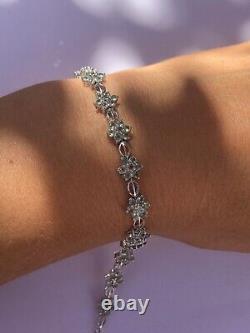

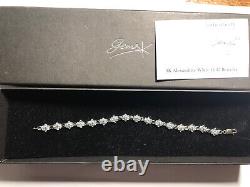
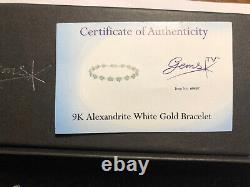

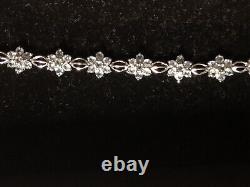

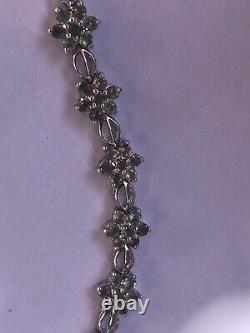
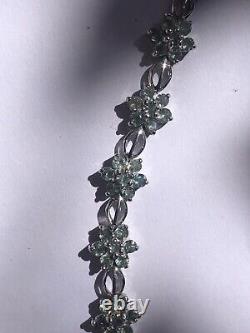
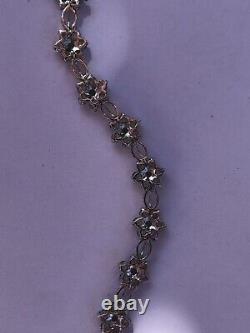
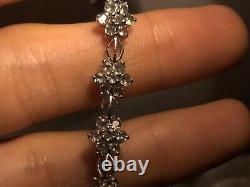
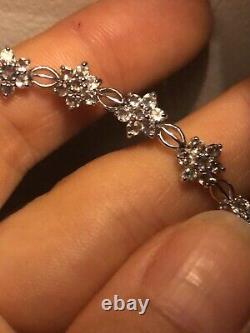


Certified Rare NATURAL Alexandrite bracelet. 20cm length of bracelet including lobster clasp.
The Alexandrite is a clean light green with even saturation and impressive clarity for a stone that is expected with inclusions. Does show colour change to grey-purple under warm light.
The stone was sourced from the Indian mines that are thought to be a continuation vein of the original Russian Alexandrite. SORRY, NO BEST OFFERS AVAILABLE ON THIS ITEM I work on small margins and price competitively. Your gemstones are certified natural earth mined gems NOT LAB CREATED or enhanced. A great deal of time and effort goes into sourcing my pieces, I work on small margins so requests for discounts must be politely declined. Please examine the photographs as they form an important part of the description. For those who do not know, alexandrite was only produced for about fifteen years during Czarist (Imperial Russia), in the nineteenth century, before the only known mine of any significance played out. For over a hundred years the sole source of alexandrite was "recycled" Russian jewelry. Russian alexandrite is still considered to be the world's best, though very small deposits of inferior alexandrite have been found outside of the Urals in Russia in recent years.Given the rarity of the gemstone, and the enormous demand, reasonably good specimens are hard to find. Flawless specimens of any significant size have almost resulted in duels between buyers vying for the privilege of being a selected purchaser.
An absolutely flawless gemstone simply is not the rule in nature. Most absolutely flawless gemstones will upon close examination be revealed to be synthetic. ALEXANDRITE HISTORY: Alexandrite is known as a "color change" gemstone. It is emerald green in daylight or under fluorescent lighting, and a purplish red or blue under incandescent lighting, candlelight, or twilight.It belongs to the chrysoberyl family of gems, and one of the most extraordinary types is a cats-eye variety of alexandrite, possessing a remarkably prominent "cat's eye". Most sources credit the discovery of this very unique gemstone to the year 1830 on the birthday of Prince (and ultimately Czar) Alexander II in the Ural Mountains of Russia, near the city of Ekaterinburg. In celebration of Prince Alexander's coming-of-age, this remarkable gemstone was named after him. Alexandrite was popular in Imperial Russia both with the royal family and the wealthy elite, both because of its association with the Czar, and because red and green were the colors of the Russian Empire (and its flag). However this most rare stone did not bring to Alexander the good fortune it is now generally associated with.
Upon ascending to the throne of Russia, Alexander II began long-awaited reforms, including abolishing serfdom, a deed that earned him the name of "The Liberator". But a terrorist's bomb ended his life. In memoriam of the monarch who passed away so prematurely, many people in Russia started to wear alexandrite jewelry.
It was considered to be the symbol of loyalty to the throne and compassion towards the victims of the revolutionary terror, but at the same time, it said a lot about the owner's fortune and social position. According to Leskov, there were people who made quite an effort to find an alexandrite, and more often, they failed than succeeded. Alexandrite is well known to be an extremely scarce and very costly gem.
The quality of color change with different illumination is the primary basis for its quality and price. According to the Gemstone Institute of America ("GIA"), no more than one person out of 100,000 has ever seen a natural alexandrite gemstone, although synthetic alexandrite is common and widely available. It is likely that if you read the fine print of 99% of the Alexandrite offered at retail jewelers, you will find it to be "laboratory produced" - synthetic.
If there is a huge color change from a very intense green to a very intense red/purple, you can be 99.9% sure that both the color change and the gemstone itself is synthetic. The shift in color of natural gemstones is generally much more subtle. Kind of like the difference in taste between fruit juice and Kool-Aide. One is subtle and natural, the other brassy and synthetic. Of course, alexandrite can be found in Russian jewelry of the imperial era, as it was well loved by the Russian master jewelers.
Master gemologist George Kunz of Tiffany was a fan of alexandrite, and the company produced many rings featuring fine alexandrite in the late nineteenth and early twentieth century, including some set in platinum from the twenties. Some Victorian jewelry from England featured sets of small alexandrite.However the original source in Russia's Ural Mountains has long since closed after producing for only a few decades, and only a few stones can be found on the Russian market today. In the past few decades some very small deposits of alexandrite have been discovered in Brazil, Sri Lanka, Zimbabwe, Tanzania, India, and Mozambique. However the Brazilian gemstones tend to have washed out colors when cut, and the African and Celanese sources produce very dark, not brightly colored gemstones.
The alexandrite from India tends to be with limited color change. The cut alexandrite originating from Russia is usually "harvested" from vintage jewelry. For over a century this source of "recycled" gemstones from Russia was the only source of Alexandrite, and for many years, alexandrite was almost impossible to find because there was so little available. A few specimens are still found from time-to-time in the Ural Mountains of Russia, and are sometimes available as an unset stone, but it is extremely rare in fine qualities. Stones over 5 carats are almost unknown, though the Smithsonian in Washington D.
Owns a 66 carat specimen, which is believed to be the largest cut alexandrite in existence. The colors within alexandrite are due to trace amounts of the mineral impurities iron, titanium, and chromium (and rarely vanadium is also present).
As is the case with emerald, the chromium element both giveth and taketh away. While chromium is responsible both for the green color as well as the color change characteristics of alexandrite, chromium also causes alexandrite (like emerald and ruby) to be characterized by fissures and fractures within the gemstone.
Just as emerald is treated under high pressure with oil, in recent years newly-mined alexandrite has oftentimes similarly treated under high pressure with a fluxing agent such as resin, wax, or borax. The tiny crevasses and fractures are then filled with this material under high pressure, and the treatment is generally very difficult to detect outside of the laboratory. However whereas emerald (and ruby) are routinely treated, alexandrite is only occasionally (and only recently) afforded such treatment. The treatment is a recent development, and was not used on gemstones produced in the nineteenth century.
In Russia alexandrite is thought to bring luck, good fortune and love, and also to allow the wearer to foresee danger. It is also believed to encourage romance, and to strengthen intuition, creativity, and imagination.Alexandrite is also believed to be beneficial in the treatment of leukemia. On the metaphysical plane, alexandrite is believed useful in reinforcing one's self esteem and balancing positive and negative energy. This item is in the category "Jewellery & Watches\Fine Jewellery\Rings". The seller is "lanagold88888" and is located in this country: GB.
This item can be shipped to United Kingdom, Antigua and Barbuda, Austria, Belgium, Bulgaria, Croatia, Republic of, Cyprus, Czech Republic, Denmark, Estonia, Finland, France, Germany, Greece, Hungary, Ireland, Italy, Latvia, Lithuania, Luxembourg, Malta, Netherlands, Poland, Portugal, Romania, Slovakia, Slovenia, Spain, Sweden, Australia, United States, Bahrain, Canada, Brazil, Japan, New Zealand, Israel, Hong Kong, Norway, Indonesia, Malaysia, Mexico, Singapore, Korea, South, Taiwan, Thailand, Bangladesh, Belize, Bermuda, Bolivia, Barbados, Brunei Darussalam, Cayman Islands, Dominica, Ecuador, Egypt, Guernsey, Gibraltar, Guadeloupe, Grenada, French Guiana, Iceland, Jersey, Jordan, Cambodia, Saint Kitts-Nevis, Saint Lucia, Liechtenstein, Sri Lanka, Macau, Monaco, Maldives, Montserrat, Martinique, Nicaragua, Oman, Pakistan, Peru, Paraguay, Reunion, Turks and Caicos Islands, Aruba, Saudi Arabia, South Africa, United Arab Emirates, Chile, Bahamas, Colombia, Costa Rica, Kuwait, Philippines, Qatar, Uruguay, Vietnam.
- Main Stone Creation: Natural
- Main Stone Colour: green -pink
- Material: gold &gemstone
- Metal: White Gold
- Total Carat Weight: 4.04
- Secondary Stone: Alexandrite
- Main Stone: Alexandrite
- Colour: green/grey-purple
- Brand: Gemporia
- Setting Style: Prong
- Ring Size: bracelet
- Main Stone Treatment: Not Enhanced
- Type: bracelet
- Metal Purity: 9ct
- Theme: Nature
- Style: stacker
- Country of Origin: India


